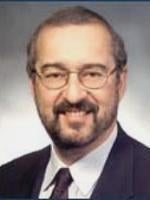The U.S. Supreme Court has granted certiorari in two patent cases, which will join Mayo v. Prometheus case (see IP Update, Vol. 14, No. 6) on the Court’s fall docket.
Hatch-Waxman Issues to Be Reviewed
The first of the new cases is Caraco Pharm. Labs., Ltd. v. Novo Nordisk, Case No. 10-844 (Supr. Ct., June 26, 2011). Novo Nordisk owns patents underlying the drug repaglinide (marketed under the brand name Prandin). The FDA approved three uses of Prandin—by itself, in combination with metformin, and in combination with thiazolidinediones. However, the agency initially limited the Orange Book use code to “[u]se of repaglinide in combination with metformin to lower blood glucose.”
After Caraco Pharm. filed an Abbreviated New Drug Application (ANDA) with a certification as to one of the patents, it added a statement declaring that it was not seeking approval for the combination with metformin. Novo Nordisk then requested the U.S. Food and Drug Administration (FDA) broaden the use code description to “method for improving glycemic control in adults with type 2 diabetes mellitus,” which the FDA agreed to do.
The FDA also required Caraco to label its product without disclaiming use with metformin. After Novo Nordisk brought an infringement suit, Caraco counterclaimed, seeking that the use code and description be changed back to the original form.
The district court granted Caraco’s motion for summary judgment on the counterclaim, which would have forced the use code revision. The Federal Circuit (over a vigorous dissent) reversed (see IP Update, Vol. 11, No. 4), the majority concluding that the counterclaim provision is available only when the branded drug maker lists patents that are not related to the listed drug.
The Supreme Court granted cert to address the following question:
“Whether the counterclaim provision applies where
(1) there is ‘an approved method of using the drug’ that ‘the patent does not claim,’ and (2) the brand submits ‘patent information’ to the FDA that misstates the patent’s scope, requiring ‘correct[ion].’”
§145 Appeals / Evidence
The second case on which cert was granted stems from an appeal from the U.S. Patent and Trademark Office’s Board of Patent Appeals and Interferences (the Board) that addresses the infrequently encountered issue of whether there a heightened standard for introducing new evidence when a party takes a direct appeal of a Board decision to a district court under 35 USC §145. Kappos v. Hyatt, Case No. 10-1219 (Supr. Ct., June 22, 2011).
After the USPTO rejected Hyatt’s claims for an improved computer memory architecture for lack of written description and enablement, Hyatt filed a §145 action in a district court against the USPTO. In response to the USPTO’s motion for summary judgment, Hyatt filed a declaration supporting his belief that the written description was adequate and included new arguments. The district court excluded the declaration, agreeing with the USPTO that new evidence should be admissible in §145 action only if it could not reasonably have been provided to the agency in the first instance.
On appeal, a split panel of the Federal Circuit affirmed the evidentiary exclusion (IP Update, Vol. 12, No. 8) but, after rehearing en banc, the Federal Circuit reversed (7-2) the original panel decision (IP Update, Vol. 13, No. 3), concluding that the introduction of new evidence in §145 proceedings is limited only by the Federal Rules of Evidence and the Federal Rules of Civil Procedure.
The Federal Circuit rejected the USPTO’s argument as to the deference owed to the agency under the Administrative Procedure Act, but agreed that “if the parties to a §145 action do not introduce any new evidence before the district court, the court reviews the case on the same record presented to the agency and the reviewing court must apply the APA’s substantial evidence standard to Patent Office fact findings.” However, where new or different evidence is introduced, the district court becomes the fact-finder and must weigh the new evidence.
The Supreme Court granted cert to consider the following questions:
(1) Whether the plaintiff in a §145 action may introduce new evidence that could have been presented to the agency in the first instance, and
(2) Whether, when new evidence is introduced under §145, the district court may decide de novo the factual questions to which the evidence pertains, without giving deference to the prior decision of the PTO.



 i
i

